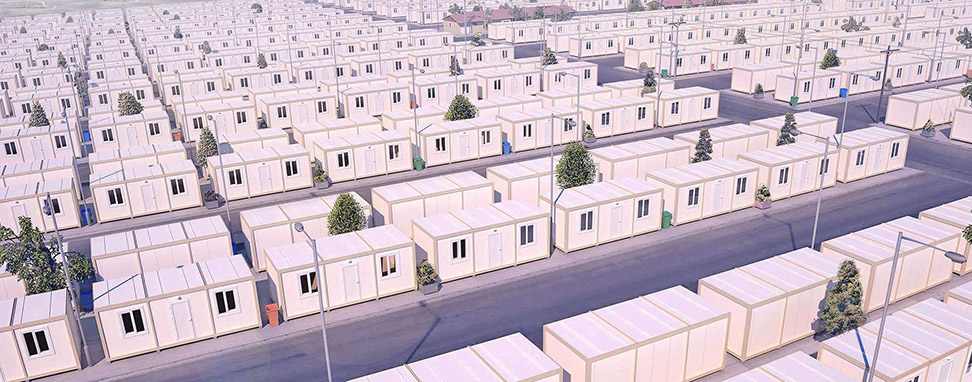Prefab Container House Adaptability in Mining Camp Projects in Indonesia
Introduction:
Mining is one of the most important industries in Indonesia, contributing significantly to the country's economy. However, mining activities require significant infrastructure development to support the workers' accommodation, logistics, and operational support. In this context, prefab container houses emerge as one of the most viable alternatives to conventional building structures. These modular houses are fabricated in factories, and the prefabricated modules are transported to the project site, where they are assembled to create a complete structure. This approach offers several advantages in terms of cost, time, durability, and sustainability. In this article, we will explore the adaptability of prefab container houses in mining camp projects in Indonesia.
Advantages of Prefab Container Houses in Mining Camp Projects:
1. Cost-Effective:
Prefab container houses are significantly cheaper than traditional construction methods. This is because they are mass-produced in factories, which allows for economies of scale. Moreover, the assembly process is quick and easy, which saves labor costs. In the context of mining camp projects, this cost-saving approach is beneficial as it allows for the project to stay within budget constraints.
2. Time-Efficient:
Prefab container homes are manufactured in factories and transported to the project site. This approach significantly reduces the construction time, allowing for faster completion of the mining camp project. The pre-engineered modules can also be quickly assembled and disassembled, ensuring that the camp can be moved to various locations based on the mining activity.
3. Sustainability:
Many prefab container houses are made from recycled materials and are designed to minimize the energy used for heating and cooling. In the context of mining camp projects, this is important as the camp's energy needs are significant, and reducing energy consumption is a crucial aspect of sustainability. Moreover, prefab container houses are also cost-effective to maintain, which reduces their environmental impact.
4. Durability:
Prefab container houses are designed to withstand harsh conditions, such as those found in mining operations. They are built to be weather-resistant and can withstand high winds, heavy snow, and other extreme weather conditions. This durability is essential in the mining industry context, as it ensures that the camp can withstand the industry's harsh conditions.
5. Ease of relocation:
Prefab container homes are designed to be easy to disassemble and relocate, which is crucial in the mining industry context. Mining activities often require camp relocation, and prefab container homes allow for this process to be easy and cost-effective.
Conclusion:
Overall, prefab container houses offer several benefits that make them an ideal solution for mining camp projects in Indonesia. Their cost-effectiveness, time efficiency, sustainability, durability, and ease of relocation make them a practical option for this industry's unique requirements. As mining activity continues to grow in Indonesia, it is likely that prefab container houses will become a more common solution for mining camps. Therefore, the adaptability of prefab container homes in the mining industry represents a positive and practical solution to the industry's challenges.








